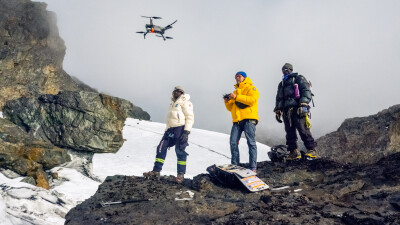Back in October 2003, when Spar Point Research was first getting started, I wrote an article asking how much CAD modeling was really necessary to get value from point cloud data. How useful are point clouds served up raw, or in a hybrid CAD/point cloud visualization environment? More than two years later the issue finds champions on both sides of the argument, and for good reasons too.
It’s important to ask the question – modeling point cloud data in CAD can eat schedule and budget. We learned from automobile manufacturing companies that there is often very high value in having 3D CAD deliverables from scanning. This is the only way to feed high-value robotic simulation applications such as Tecnomatix or DELMIA. Even if it takes 20 days of back-office post-processing for every day of field data capture, the value of being able to conduct kinematic simulations based on accurate as-is, as-maintained data is high enough to yield monster payback. Current-generation solids modeling applications such as CATIA, Pro/ENGINEER and UG NX are not designed to interact directly with large point clouds of hundreds of millions of points or even billions of points. Modeling is the only choice here.
Aside from technical drivers, there are human factors too. If your shop has several hundred seats of CAD package X, and changing a work process requires six months of committee review and two vice president signatures, it is just easier to start using point cloud data if it is served up in a CAD format. Sometimes this is the only way to get point-cloud-based work processes introduced and implemented. Changing work processes is rarely easy or straightforward, even if the economic benefit is clear and present.
Many innovative applications of visualizing and manipulating native point-cloud data – i.e., no CAD modeling – have been driven by cost and schedule imperatives in process plant revamp work. Fast-track projects can’t wait for models to be created. In some instances, modeling point cloud data in today’s CAD systems is a step in the wrong direction. As-built geometry is rarely orthogonal; pipes are often banana-shaped, and sometimes it’s the small stuff that is particularly expensive to model that busts the design. Simply put, modeling geometry can introduce errors in some instances – errors that are not trapped until construction time. For some, the better approach is to use the measured point cloud data as the reference geometry. Clash detection, reporting and management of new design geometry can yield significant re-work reduction benefits, as we’ve reported on previously. In other cases, CAD model data is of the essence – how else to calculate the mass of a volume that is to be demolished? How else to perform a stress analysis? This is why it is so important to spend the up-front effort to specify the deliverables based on planned use.
For civil, building and transportation infrastructure projects, the issues are similar. Of course there is less 3D; many work processes still rely on 2D or 2-1/2-D vector data. Sometimes measurements such as bridge clearances, curb heights, and pillar position and dimensions can be extracted directly from the point cloud. In other instances, clients place a high value on back-end planning, and modeling is the right choice.
Some asset owners are beginning to see ways to harness point cloud data for maintenance and operations purposes. Selective modeling of certain areas may be the only way to integrate point cloud data to existing asset management workflows. Annotating point cloud databases for asset management purposes is a development we’re certain to see going forward.
Of course there are some business-model issues too. For many service providers, modeling services are bread-and-butter business. And if that’s what the client wants and needs, that’s the way it should be. However, we believe savvy engineering/construction firms and asset owners evaluate this requirement on a case-by-case basis. Our view is that CAD vendors have lots to gain from this too. The data management, visualization and integration opportunity created by more and more point cloud data is potentially vast. AVEVA, Bentley and Intergraph seem to grasp this, and development in this area proceeds apace.
We think this issue is important. Next month SPAR 2006 will feature a panel discussion on the topic with some of the world’s most experienced and technically competent service providers giving their views. Join Greg Lawes, Vice President, Meridian Associates; Inge Byrkjeland, Technical Manager – AsIs Scanning, Grenland Group; Eric Hoffman, CEO, Quantapoint; and Andrew Bailey, Business Development Director, Hi-CAD Limited for this valuable session.





